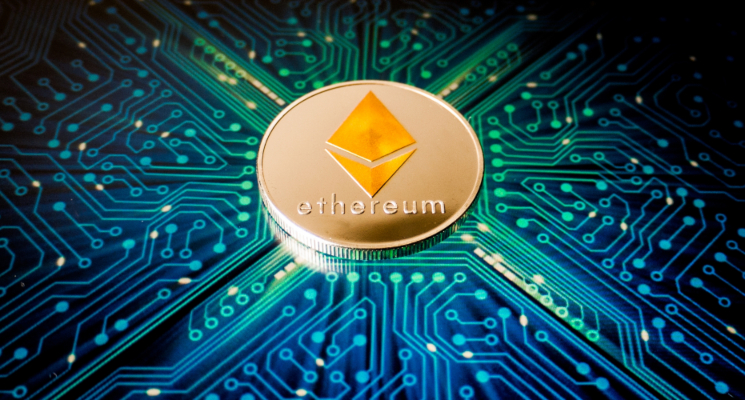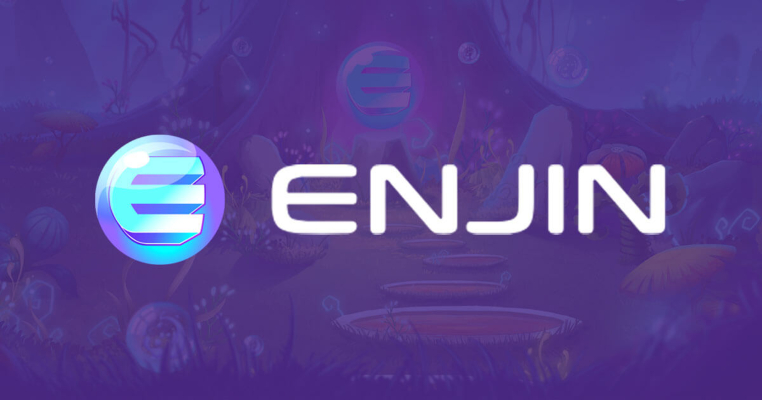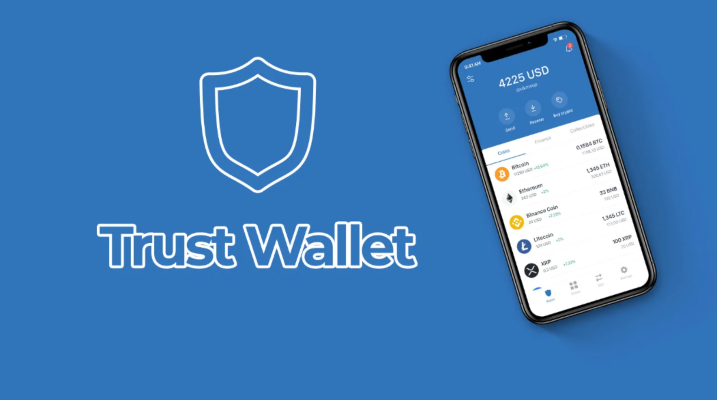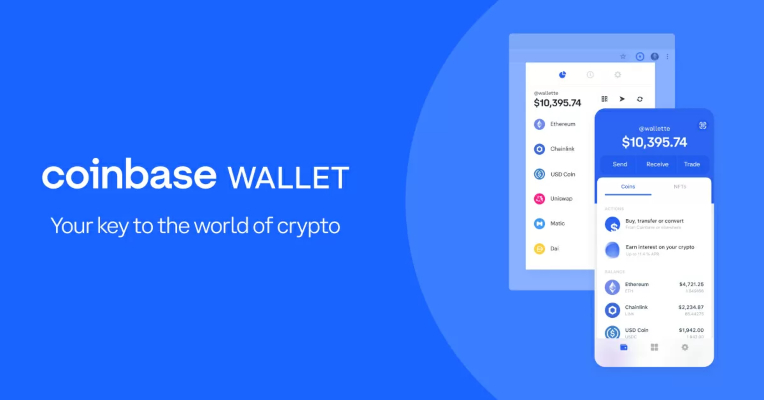The significant rise of cryptocurrency and NFTs led to many people getting their own and some getting the NFTs of others. It happens with traditional art: when something acquires a lot of value, there will be people who can’t afford it (or don’t want to get it legally) and will try to steal it. The digital space was no stranger to this.
That’s why we had an increasing number of marketplaces and wallets focusing on the security of NFTs and digital assets. If you are new to the world of crypto and NFTs, don’t be scared. There are many ways to secure your digital assets, some more secure than others.
Where Does an NFT Go After I Buy It?
The NFT refers to the digital signature made during the minting process. This distinctive signature is a token with a web address that points to the digital asset (like digital arts, videos, songs, or whatever method was used for the NFT).
This token, which acts like a certificate, is saved inside the blockchain. Meanwhile, the file itself is stored on the NFT marketplace from where it was bought.
Therefore, the NFT grants you digital ownership of the item purchased, but the asset acquired is stored elsewhere.
Crypto Wallet – What Is It?
It’s a software or device which interacts with blockchain networks. They are needed to trade any kind of digital currency. The crypto wallet creates a private key to the address of the asset in the blockchain, which is required to authorize any transaction on that address.
Keep in mind that cryptocurrency wallets don’t actually store your crypto assets. They are part of the blockchain system as data, and these wallets are used to access them.
Main Features of an NFT Wallet
There are many important features that you should consider when choosing a crypto wallet to store all your digital assets:
- Security: A strong wallet offers two-factor authentication and different robust encryption methods to protect your data from outsiders. Any extra layer to prevent hackers from getting into your account will be better.
- Marketplace Compatibility: The second thing that you should check is if it’s compatible with your preferred NFT marketplace. If not, you won’t be able to make any kind of transaction.
- Cross-Chain Compatibility: A wallet that supports many blockchains gives you the opportunity to have access to NFTs from different places. However, the majority supports the Ethereum blockchain (as it is the most popular around). The more options you have available, the better.
- Being User-Friendly: Having an easy-to-understand interface can improve the experience drastically. Also, you should look for a wallet that supports cross-device use to store your NFTs. Try to get a wallet that runs on at least two devices while enabling real-time synchronization of trades and transactions.
- Interaction with Banks: This is a rare feature, unfortunately. There aren’t many wallets that allow you to withdraw funds to a bank account. And if you use credit or debit cards for payments, check if they have this feature, as it is not a standard feature on crypto wallets.
Blockchain Security

Blockchains utilize a decentralized platform that works as a distributed database, which can continuously grow a list of data records, known as blocks. Each of these blocks contains elements, such as a cryptographic hash of the previous block, a timestamp, and transaction data.
A key feature of a blockchain is that it can corroborate users and ensure that their identities aren’t revealed, helping to mitigate any data breaches.
Blockchains are also transparent, as everyone on the network is able to see all data exchanges. Blockchains are immutable, meaning that once the data is recorded, it can’t be altered or erased.
Main Risks
A decentralized blockchain network allows data to be held without a central authority. But a single server can be hacked, and all the sensitive data allocated on that server could be stolen.
Another risk that you could deal with is hackers who target users’ wallets. You would still have a chance to recover your assets, but you are doomed once they get your secret phrase to secure your cryptocurrency wallet.
Suppose you use a hardware wallet (which we’ll see later), and it was damaged or lost. In that case, you can still recover your NFT assets with the 24-word recovery phrase and store them on another device. We recommend keeping your wallet’s information private and in a physical location, written somewhere.
Types of Storage
When picking where to store your NFT, ensure that it is compatible with different chains and the marketplaces used to buy and sell NFTs.
As stated before, a wallet guarantees access to your NFT rather than storing it itself, providing a private key. But being online, it is vulnerable to any sort of cyber attack. So, the best solution is to save and store NFTs offline for cold storage, meaning that it isn’t connected to the internet, impeding any unauthorized access.
Next, we will see the different types of NFT storage that you can use.
Software Wallets
A software wallet usually has standard security for NFTs. Everything is encrypted in the browser or cloud service and is secured by your password and a 24-word seed phrase. Most of these wallets have a user-friendly interface and have become popular for storing digital assets.
But, of course, these are the most vulnerable, and hackers are always trying to breach the next online software wallet. It’s just a matter of time before every software wallet suffers an attack.
InterPlanetary File System (IPFS)
It is a peer-to-peer hypermedia protocol where users can store their decentralized NFTs off-chain, decreasing the chance of being hacked.
IPFS changes how information is distributed using content-based addressing instead of the standard location-based. When you add a file to IPFS, it is split into smaller pieces, cryptographically sliced, and given a unique certificate called a Content Identifier (CID).
CID is a permanent record of your file, and it’s directly connected to the NFT content instead of an HTTP link which can be hacked and modified, granting more security. Files stored on IPFS cannot be censored or tampered with, and any changes cannot overwrite the original file. If a hacker node ever makes a CID hash, you will be notified on your end of the false data.
Cold Storage Hardware Wallet
While IPFS is a pretty secure storage option, if you are concerned about your NFTs’ security, go for a Hardware Storage Wallet. Being offline means that the private keys which enable users to access their valuable assets are stored in an unhackable hardware wallet device rather than on a website where they are vulnerable.
Cold storage wallet provides extra security with two-factor authentication always being enabled. And, without having the physical device in its hands, it is impossible to hack and steal its content.
Ultimately, a hardware wallet is the most secure option to safely store your NFTs in your power.
Best NFT Wallet Examples
IPFS and Hardware Wallet could be complex for most people. So, the preferred option ends up being software wallets. For this category, there are plenty of options to choose from, and we’ll take a look at which are the best around the internet to keep your NFTs safe.
Metamask Wallet

It’s one of the most popular crypto wallets. Its Chrome extension provides easy access to Web3 sites like NFT marketplaces. It also allows you to set up multiple addresses to hold your NFTs separate from your cryptocurrency, or you can set up a single address for each NFT that you purchase.
Metamask gives you access to a DeFi and NFT browser on your mobile device, thanks to their mobile version launched in 2020. You can sync with zero issues between the mobile wallet and the desktop version.
It comes with a swap currency feature and a limit for how much gas fee you are willing to pay. Lastly, it is one of the most secure online wallets, compatible with Ethereum, where you can store most tokens on its blockchain, including ERC-20 and ERC-721.
Enjin Wallet

Enjin is an amazing NFT storage option designed specifically for gamers. You have no restrictions or constraints on using any particular cryptocurrency.
You can access the wallet to the Enjin NFT marketplace using their own token, ENJ. You will have access to DeFi DApps, too.
It has an active customer support service, and with features like biometrics and auto-lock boost security, Enjin can keep your NFTs securely stored.
Trust Wallet

Owned by Binance, it’s another of the most popular wallets on the market. Being mobile-only, it has one of the best interfaces for newcomers to the NFT world. It supports multiple blockchains, although it is more biased toward Binance smart chain tokens.
It also includes a browser for DApps to search for NFT marketplaces and a built-in exchange feature that allows people to swap currencies easily.
Math Wallet

Its biggest advantage over Metamask is that they support over 70 different blockchains. Math wallet has a mobile, desktop, and mobile version that syncs across devices. It also integrates with some hardware wallets and allows you to create multiple addresses.
It has many features that Metamask offers, too (like DApp browser, swap currency, and stacking). Still, a common complaint that Math receives is its lackluster support service.
Coinbase Wallet

Coinbase is an officialized marketplace to exchange cryptocurrency based in San Francisco. This provides the entity with trust and credibility around the globe. Although, it means that it has to follow the US government regulations.
It offers a non-custodial wallet suitable for holding any sort of digital assets. Coinbase also has its mobile version, with a built-in DApp browser to look for NFT marketplaces and a browser extension, which allows sync across different devices.
Conclusion
Keeping safe your NFT collection is one of the biggest concerns everyone has, even more with news about any hack that happened in recent days appearing more often. Hackers are finding easier ways to access your personal data, and with rising prices on NFTs, it’s more than a tempting target to steal.
Understanding how an NFT wallet works and which can be your best option to be safe, you have less to worry about now.
